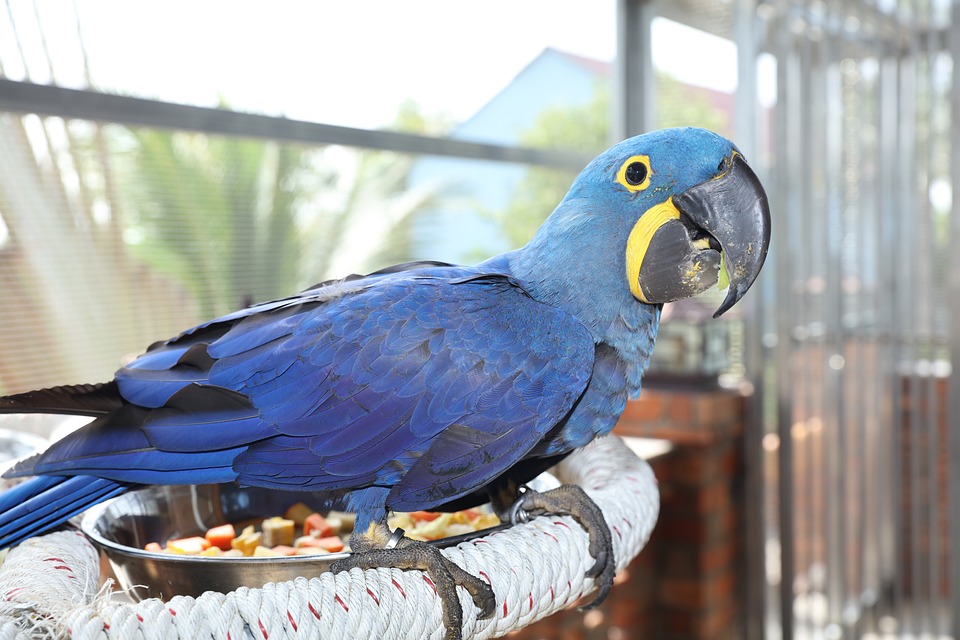Parrots are not only highly sociable creatures but also possess a natural inclination towards social interactions. While they often form strong bonds with their human companions, their relationships with other birds are equally important for their well-being and happiness. In this article, we will delve into the intricacies of parrot social interactions, shed light on common behaviors, and provide valuable insights on promoting healthy relationships between parrots and their avian counterparts.
First and foremost, it is crucial to understand the importance of parrot socialization. Parrots are naturally social animals, and their social interactions play a vital role in their mental health and overall happiness. In the wild, parrots live in flocks, where they engage in various activities such as foraging, preening, and flying together. By providing opportunities for socialization, we can mimic these natural flock dynamics and ensure the well-being of our pet parrots.
Within a flock, social hierarchy and dominance are prevalent. Parrots establish a pecking order, with dominant individuals having priority access to resources and exerting control over others. Understanding these dynamics is essential when introducing new birds to an existing flock or when observing interactions between parrots. It is not uncommon to see displays of dominance, such as posturing, vocalizations, and even physical aggression. However, it is important to monitor these interactions to prevent excessive aggression or bullying.
Courtship and mating rituals are another aspect of parrot social interactions. Parrots engage in elaborate displays, vocalizations, and dances to attract potential mates. Observing and understanding these behaviors can provide valuable insights into the social lives of parrots and help create a conducive environment for successful breeding.
When it comes to how parrots respond to other birds, vocalizations and calls play a significant role. Parrots communicate with other birds through a wide range of vocalizations, including calls, whistles, screams, and mimicry. These vocalizations serve various purposes, such as establishing territory, expressing emotions, and maintaining social bonds. By paying attention to these vocal cues, we can gain insights into the parrot’s feelings and intentions.
Body language and physical cues also play a crucial role in parrot social interactions. Wing flapping, head bobbing, tail feather displays, and even eye pinning are all forms of nonverbal communication that parrots use to convey their intentions and emotions. Understanding these physical cues can help us interpret and respond appropriately to our parrot’s needs.
Interestingly, parrots are excellent mimics and learners. They can pick up vocalizations, gestures, and problem-solving techniques from other birds, making social interactions with their avian companions enriching and stimulating. This ability to learn from others is a testament to their intelligence and highlights the importance of providing opportunities for socialization.
To encourage positive social interactions among parrots and other birds, it is essential to provide opportunities for socialization. This can include supervised interactions in a controlled environment, allowing birds to observe and interact with each other while ensuring their safety. Introducing new birds gradually and monitoring their interactions can help prevent conflicts and promote successful integration.
In cases where a parrot displays aggressive behavior towards other birds, it is crucial to prioritize the safety of all involved. Separating the birds and consulting with a professional avian behaviorist can help address the underlying causes of aggression and provide appropriate training techniques to manage and prevent aggressive behavior.
In conclusion, understanding parrot social interactions is vital for parrot owners and enthusiasts. By recognizing the importance of socialization, familiarizing ourselves with parrot behaviors, and fostering positive interactions among birds, we can provide a fulfilling and engaging environment for our feathered friends. Let us embrace their social nature and encourage healthy relationships between parrots and other birds for a harmonious avian community.









